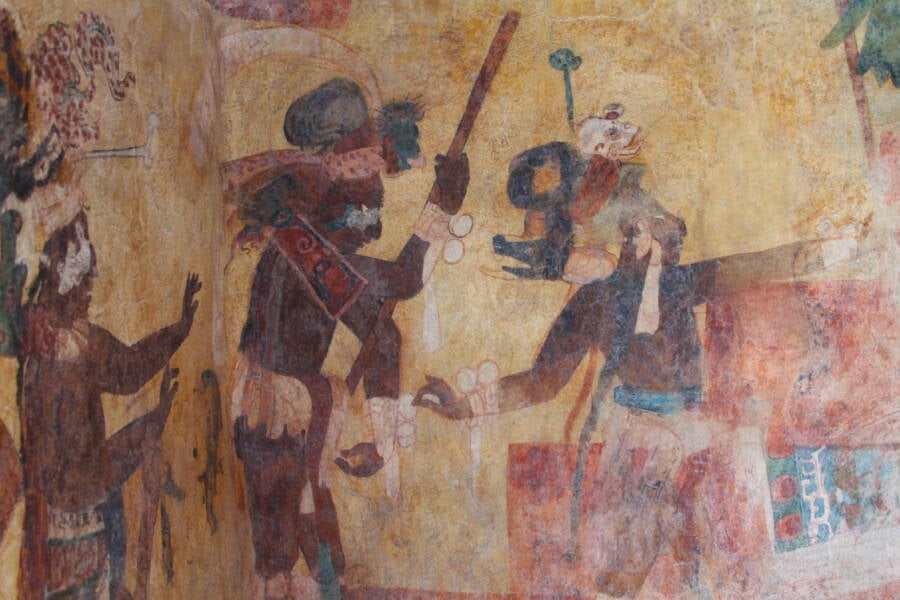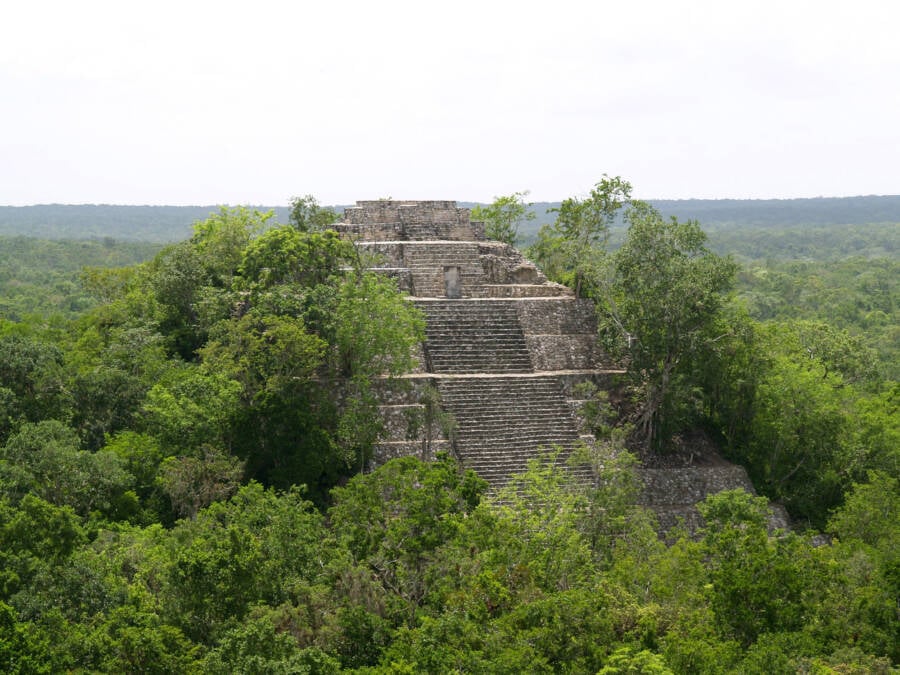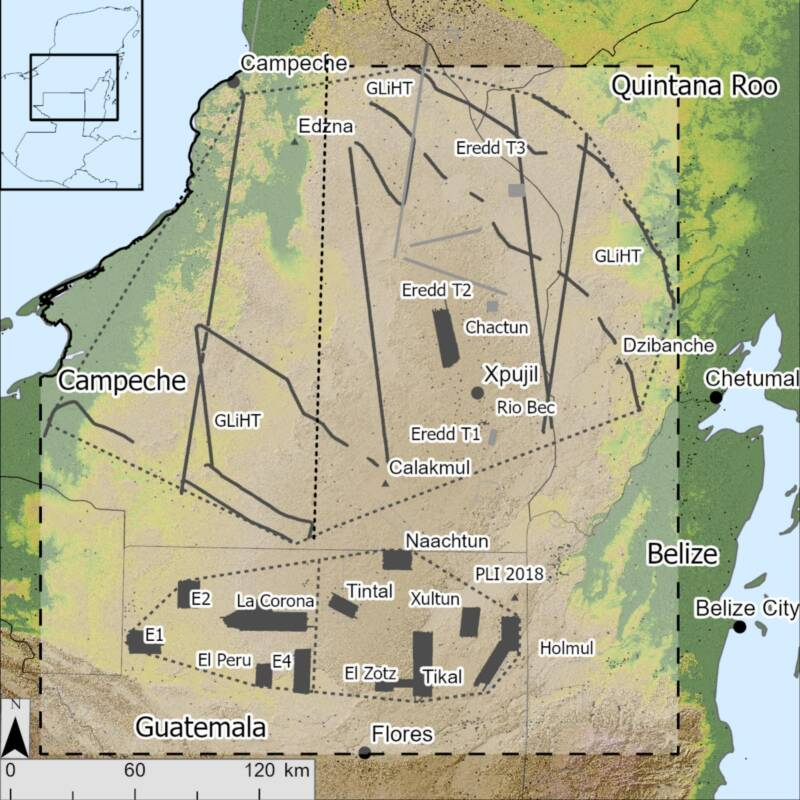Researchers used LiDAR scans of Maya urban centers to conclude that, when the population was at its peak circa 600-900 C.E., this civilization was much larger than experts once thought.

Wikimedia CommonsNew estimates place the Maya population between 9.6 and 16.5 million during its peak years from roughly 600 to 900 C.E.
Because so much remains to be discovered about the Maya civilization, it has long been difficult for researchers to accurately estimate its population.
In 2018, experts suggested that the population of the Maya may have been around 11 million. However, a new study from Tulane University archaeologists, published in the Journal of Archaeological Science: Reports, claims that the Maya population could have been closer to 16 million, representing a roughly 45 percent increase over previous estimates.
New evidence furthermore suggested that Maya cities were more sophisticated than previously believed, featuring densely occupied urban centers with advanced resource management and social organization.
How Big Was The Maya Civilization? LiDAR Provides New Population Estimates

Wikimedia CommonsA pyramid at the ancient Maya city of Calakmul.
Using LiDAR (light detection and ranging) technology, researchers from Tulane University carried out a comprehensive analysis of ruins across the Central Maya Lowlands — spanning parts of Guatemala, southern Mexico, and western Belize — to reassess population estimates of the Late Classic period (600 to 900 C.E.). The team also aggregated reprocessed datasets from multiple sources, including NASA’s Goddard G-LiHT, and new archaeological surveys in Campeche and Quintana Roo.
This revealed a consistent, highly structured settlement pattern. Almost every structure was located within roughly three miles of a plaza complex, suggesting organized and sprawling urban centers built around these hubs of civic and ceremonial life. Previous assumptions suggested the Classic-era Maya operated in fragmented city-states and scattered hamlets, but it now seems that was not the case.

Estrado-Belli, et al.Map showing the former locations of many of the major Maya cities.
“We’re confident these LiDAR-based findings give us the clearest picture yet of ancient Maya settlement patterns,” study lead author Francisco Estrada-Belli said in a statement from Tulane University. “We now have hard evidence that Maya society was highly structured across both cities and rural areas and far more advanced in resource and social organization than previously understood.”
The new data paints the Classic Maya Lowlands as densely populated and socially organized, thanks to highly-developed urban planning, agriculture, and civic infrastructure.
Ultimately, this new analysis allowed researchers to estimate that the total Maya population during the Late Classic period was somewhere between 9.5 million and 16.5 million.
“The ancient Maya never fail to amaze men,” said Estrada-Belli. “We expected a modest increase in population estimates from our 2018 LiDAR analysis, but seeing a 45 percent jump was truly surprising. This new data confirms just how densely populated and socially organized the Maya Lowlands were at their peak.”
These findings also raise new questions about the collapse of the Maya civilization between 800 and 1000 C.E. — specifically, whether such a large, integrated population may have been more vulnerable to environmental stress or political instability.
Why The Maya Population Decreased Sharply During The Late Classic Period
Another study published in Current Biology in June 2025 also offered new insights into what may have brought about the end of the Maya civilization.
Researchers sequenced genomes from seven individuals buried near the ancient Maya city of Copán (in present-day Honduras), dating to the Classic period (250 to 900 C.E.). Analysis showed a sharp population decline around 750 C.E., aligning with archaeological indicators of political collapse and environmental stress at this time. However, results also showed a persistent genetic continuity thereafter — meaning that some modern populations are directly descended from those ancient individuals.

Wikimedia CommonsRuins of Chichén Itzá, one of the most important Maya cities and home of the famous pyramid El Castillo.
“The genetic continuity observed in our study supports the idea that the population was not replaced by another group after the collapse,” researchers wrote in the study.
Considering those findings along with the results of the Tulane study offers a fascinating interpretation of events: The Late Classic population ballooned to an unprecedented scale, but around 750 C.E., a combined environmental, political, and resource crisis triggered rapid population loss. Yet, the Maya as a people endured. Continuity in genes and (to an extent) social structures likely enabled later regional realignments — especially in surviving northern centers.
Meanwhile, Tulane University researchers also emphasized the value of LiDAR as a technology in understanding ancient societies.
“We’re thrilled to have developed a blueprint for using LiDAR data from multiple sources, including freely available ones,” said study co-author Marcello Canuto.
“This approach can help archaeologists around the world make new discoveries without waiting for new LiDAR flights. It’s a big step forward for the field.”
After learning about the Maya population, read about Camazotz, the terrifying “death bat” of Maya mythology. Then, delve into the history of the fabled pigment known as Maya Blue.





